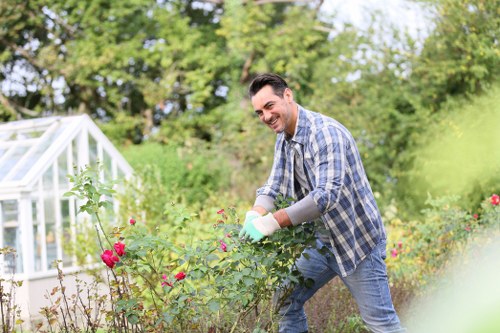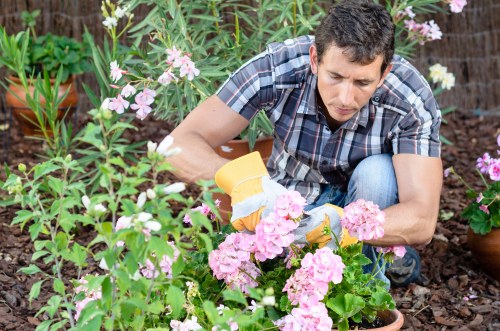Tree Lopping and Removal in Poplar
Understanding Tree Lopping and Removal

Tree lopping and removal are essential practices for maintaining the health and safety of your property. Specifically, when it comes to Poplar trees, these processes require specialized knowledge to ensure effective and safe outcomes. Whether you're dealing with a diseased tree, one that's posing a safety hazard, or simply needs to be removed for aesthetic reasons, understanding the intricacies of tree lopping and removal in Poplar is crucial.
Poplar trees are known for their rapid growth and towering presence, making them a popular choice for many landscapes. However, their fast growth can sometimes lead to structural weaknesses, making tree lopping a necessary intervention. This article delves into the methods, benefits, and considerations involved in tree lopping and removal of Poplar trees.
Effective tree removal involves more than just cutting down a tree. It requires careful planning, the right equipment, and a thorough understanding of the tree's biology and its environment. Improper removal can lead to property damage, safety hazards, and environmental impact. Therefore, it's often recommended to seek professional help when dealing with significant tree removal projects.
Why Choose Poplar Trees?

Poplar trees are favored for their fast growth, making them ideal for quick shade and windbreaks. They are also relatively easy to care for and can thrive in various soil conditions. However, their rapid growth can sometimes lead to weak branches and structural instability, necessitating tree lopping to maintain their health and appearance.
One of the main benefits of Poplar trees is their ability to provide quick privacy and shelter. They are often used in urban areas to create green barriers and enhance the aesthetic appeal of properties. Despite these advantages, it's important to monitor their growth and address any issues promptly to prevent potential problems down the line.
Regular tree maintenance, including pruning and lopping, helps in managing the shape and size of Poplar trees. This not only ensures their longevity but also enhances their contribution to the landscape. Neglecting these practices can lead to overgrowth, increased susceptibility to pests, and a higher risk of falling branches.
When to Lop or Remove a Poplar Tree

Determining when to undertake tree lopping or removal is critical for the health of the Poplar tree and the safety of your property. Several factors can indicate the need for these services, including disease, structural weakness, location, and aesthetic considerations.
Signs of Disease or Infestation: Poplar trees can be susceptible to various diseases and pests that weaken their structure and overall health. Common indicators include discolored leaves, unusual growth patterns, and visible signs of pests such as holes in the bark or sap leaks. If left untreated, these issues can escalate, making tree removal necessary.
Structural Weakness: Overgrown or improperly maintained Poplar trees may develop weak branches or a compromised trunk. Storm damage or lightning strikes can also cause significant structural issues that require immediate attention. In such cases, tree lopping can help remove the weakened parts and restore the tree's integrity.
Benefits of Professional Tree Lopping

Engaging professionals for tree lopping and removal offers numerous benefits. Professional arborists possess the expertise and equipment necessary to handle complex tree work safely and efficiently. They can assess the tree's condition, determine the best course of action, and execute the plan with precision.
- Safety: Professionals are trained to handle potentially hazardous situations, reducing the risk of accidents and property damage.
- Efficiency: With the right tools and experience, tree professionals can complete the job more quickly than untrained individuals.
- Health Assessment: Arborists can identify underlying issues that may not be apparent, ensuring comprehensive tree care.
- Proper Disposal: Professionals handle the removal and disposal of tree debris, maintaining a clean and safe environment.
Moreover, professional tree loppers can enhance the tree's health by removing dead or diseased branches, promoting better air circulation and sunlight penetration, which are vital for the tree's growth.
Tree lopping done correctly can significantly extend the lifespan of Poplar trees, maintaining their beauty and functionality in your landscape.
Choosing the Right Tree Removal Service

Selecting a reputable tree removal service is essential to ensure that the job is done correctly and safely. When looking for a service provider, consider the following factors:
- Experience: Choose a company with extensive experience in handling Poplar trees and similar species.
- Licensing and Insurance: Ensure that the company is properly licensed and insured to protect against any potential liabilities.
- Reputation: Look for reviews and testimonials that reflect the company's reliability and quality of work.
- Equipment: A professional service should utilize the latest tools and technology to perform the job efficiently.
- Estimates: Obtain detailed estimates from multiple providers to compare services and pricing.
Additionally, a good service provider will offer a comprehensive assessment of your tree's condition and provide tailored solutions that meet your specific needs.
Don't hesitate to ask questions and request references to ensure that you are choosing a trustworthy and competent company for your tree lopping and removal needs.
The Tree Lopping Process Explained
The process of tree lopping involves selective pruning to remove specific branches and promote the tree's health and stability. Here's a step-by-step overview:
- Assessment: Arborists evaluate the tree's health, structure, and the surrounding environment to determine the best approach.
- Planning: A strategic plan is developed, outlining which branches need to be removed and the methods to be used.
- Pruning: Using specialized equipment, professionals carefully remove the targeted branches, ensuring minimal damage to the remaining structure.
- Cleaning: All debris is collected and disposed of, leaving the area clean and safe.
- Follow-Up: The tree's condition is monitored to ensure it responds well to the pruning and remains healthy.
This methodical approach ensures that tree lopping is performed effectively, maintaining the Poplar tree's health while enhancing its aesthetic appeal.
Proper tree maintenance through lopping can prevent future problems and extend the life of your Poplar trees, making it a worthwhile investment for your property.
Environmental Considerations
When performing tree removal or lopping, it's important to consider the environmental impact. Poplar trees play a significant role in their ecosystems, providing habitat for wildlife, improving air quality, and contributing to the overall health of the environment.
Before deciding to remove a Poplar tree, explore alternatives such as live staking or redeployment. If removal is unavoidable, ensure that it is done responsibly, with minimal disruption to the surrounding area. Professionals can assist in mitigating environmental impacts by recycling wood and preserving as much of the tree as possible.
Additionally, consider the long-term environmental benefits of maintaining healthy Poplar trees. Proper tree lopping can enhance the tree's growth, ensuring it continues to provide ecological benefits for years to come.
By prioritizing environmental factors, you not only protect your property but also contribute to the broader goal of environmental sustainability.
Cost Factors in Tree Removal
The cost of tree lopping and removal can vary widely based on several factors. Understanding these elements can help you make informed decisions and budget accordingly:
- Tree Size: Larger trees require more labor and equipment, increasing the overall cost.
- Location: Trees situated in hard-to-reach areas or near structures may require additional precautions, affecting the price.
- Health of the Tree: Diseased or damaged trees may require specialized treatment, adding to the cost.
- Accessibility: Easy access can reduce the time and effort needed for removal, lowering expenses.
- Time of Year: Certain seasons may influence the cost due to demand and weather conditions.
It's advisable to obtain multiple quotes from reputable services to compare pricing and services offered. Remember, the lowest price may not always equate to the best value, so consider the quality and comprehensiveness of the service provided.
Tree removal is an investment in your property's safety and aesthetic, so prioritize quality and expertise over cost alone.
Safety Precautions in Tree Work
Safety should always be a top priority in tree lopping and removal. Working with trees involves inherent risks, especially with large Poplar trees that can harbor structural weaknesses or become unstable.
Professional arborists adhere to strict safety protocols to minimize risks. These include using appropriate personal protective equipment (PPE), securing the work area to keep bystanders safe, and employing techniques that reduce the likelihood of accidents.
Homeowners should never attempt to perform tree removal or lopping without the necessary skills and equipment. DIY efforts can result in injuries, property damage, and incomplete or improper tree care. Instead, rely on professionals who are trained to handle these tasks safely and effectively.
Moreover, following local regulations and obtaining necessary permits is crucial to ensure that all tree work complies with legal standards and environmental guidelines.
Post-Removal Care
After tree removal, proper care is essential to maintain the health of your landscape and prevent potential issues. Here are some key steps to consider:
- Site Cleanup: Ensure that all debris is removed to create a safe and aesthetically pleasing environment.
- Stump Treatment: If the stump is not removed, consider treating it to prevent regrowth and pest infestation.
- Soil Health: Assess and amend the soil as needed to restore nutrients and support new plant growth.
- Landscape Restoration: Plan for the replacement of the removed tree with another plant or tree species to maintain environmental balance.
- Inspection: Regularly monitor the area for any signs of erosion or other issues that may arise post-removal.
By addressing these aspects, you can ensure that your property remains safe and visually appealing after the tree removal process.
Proper post-removal care also contributes to the overall health of your landscape, promoting a thriving and balanced environment.
Legal and Regulatory Considerations
Before undertaking any tree removal, it's important to be aware of local laws and regulations. Many areas have specific guidelines to protect certain tree species and manage urban forestry. Poplar trees may fall under these regulations, especially if they are part of protected or heritage sites.
Obtaining the necessary permits is a crucial step in the tree removal process. Failure to comply with local laws can result in fines, legal action, and delays in your project. Professional tree removal services are typically well-versed in these regulations and can assist in securing the required permits.
Additionally, understanding property boundaries and any easements is vital to avoid encroaching on neighboring properties or public spaces. Clear communication with neighbors and local authorities can help in facilitating a smooth tree removal process.
Adhering to legal requirements not only ensures compliance but also promotes responsible and ethical tree management practices.
Environmental Benefits of Tree Lopping
When performed correctly, tree lopping can have several environmental benefits. Proper pruning enhances a tree's ability to photosynthesize by allowing more sunlight to penetrate the canopy, which is essential for growth and health.
Removing dead or diseased branches reduces the risk of pest infestations and the spread of diseases to other parts of the tree. This proactive approach helps maintain the tree's structural integrity and longevity.
Additionally, well-maintained Poplar trees contribute positively to the environment by improving air quality, providing habitats for wildlife, and aiding in soil stabilization. These benefits underscore the importance of regular tree maintenance and responsible lopping practices.
By investing in professional tree lopping and removal, you support the health of your trees and the broader ecosystem, fostering a sustainable and thriving environment.
Conclusion
Tree lopping and removal in Poplar are critical services that require expertise, careful planning, and adherence to safety and environmental standards. Whether you're seeking to maintain the health of your Poplar trees, enhance your property's safety, or improve its aesthetic appeal, understanding the processes involved is essential.
By choosing professional services, you ensure that the job is done correctly and safely, preserving the beauty and functionality of your landscape for years to come. Remember to consider factors such as tree health, structural integrity, and environmental impact when making decisions about tree lopping and removal.
Investing in proper tree care not only protects your property but also contributes to the well-being of the surrounding environment. Don't hesitate to contact us today or book your service now to ensure that your Poplar trees receive the care and attention they deserve.
Properly maintained Poplar trees can be a stunning and valuable addition to your property, providing shade, beauty, and environmental benefits for years to come.
